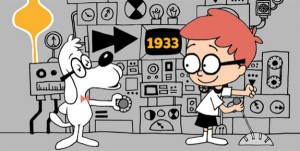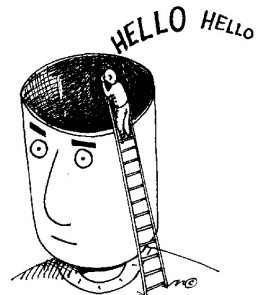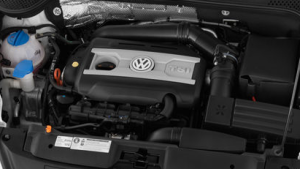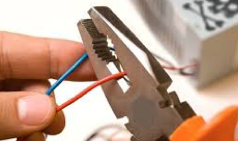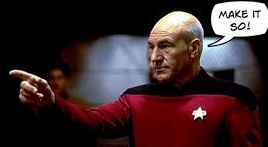Stand Up.
Make It Personal. Part 2
Have You Heard The One About The Accountant & the Mechanic?
Imagine that an accountant drives his new Lamborghini Aventador into the sports car garage complaining that his shiny new car isn’t working right. Something must be wrong and he wants it fixed.
“What seems to be the problem?” the mechanic asks, and the accountant explains how he has to do a lot of stop and start driving in the city, and that when he’s in heavy traffic, the car gets very hard to manage. Pressed for specifics, the accountant tells how the car lurches a lot, especially in manual mode, is impossibly loud and runs hot after just an hour or so of in-town driving. And on top of that, the mileage is out of control. He complains that he’d thought the new engine system was designed to avoid these problems, and just wants it fixed.
The mechanic considers the accountant and what he’s told him, then asks, “So how’s it doing on the highway?” Well, the accountant runs out of ways to explain the incredible power, performance and pure exhilaration of getting this car out on the open road.
Again, the mechanic looks at the metallic gray-blue thing-of-beauty in front of him and then over to the accountant and inquires, “You know you bought a 700hp sports car, right?” then asks, “and now you want it to behave like a sedan?”
The accountant is quiet, thinking, Just Fix It; Make It Behave.
And This Has To Do With Addiction, How?
When I come upon people talking about addiction, I feel as though I’m watching a scene like the one between the accountant and mechanic. How? Just please bear with me as I set the scene.
We need to go back to the early 1900’s, when scientists concluded that the unmanageable behavior of the alcoholic was caused by something that was wrong in his or her brain.
And because treatment did not lead to recovery, the condition was classified as chronic, something that could not be overcome but must be managed.
Since that time new technologies have allowed scientists to study the working brain, but they have yet to identify anything “wrong” that might cause or lead to addiction. Researchers noted a difference in neurotransmitter dopamine volumes released in response to a control stimulus within the reward systems of people with addiction vs. people without addiction. However, the lower NT volumes found common to those with addiction also were found among people without addiction. And this of course negates the idea that the lower NT levels and the mesolimbic dopamine system governing the NT volumes represents a brain impairment leading to substance use and addiction.
Hundreds of billions of dollars have been spent searching for something amiss in the brains of addicted people that could become the target for corrective treatment. In lieu of finding anything to fix in the brain, the focus remains on finding effective ways to treat the addicted person’s symptomatic behavior.
So what does all this have to do with the accountant and his unruly Lamborghini Aventador?
Well, back at the garage, our accountant is convinced there must be something wrong with his car for it to behave in such a herky-jerky, gas-guzzling, loud, overheated and hard to manage manner. He wants it behave like a nice, normal car while in normal, everyday traffic. And he wants the mechanic to make whatever adjustments are needed to fix it.
Like the brain scientists, our mechanic cannot find anything wrong to cause the car to behave poorly. So he turns back to the accountant, and holding in his frustration, explains that his Lamborghini Aventador can’t be fixed, because there is nothing structurally or functionally wrong.
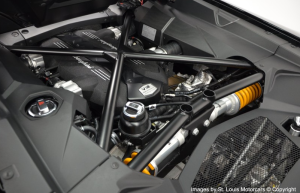 Now as it so happens, Lamborghini is owned by the Volkswagen Group. So when the accountant continues to insist that his high performance supercar be made to behave in a more civilized manner, the mechanic matter-of-factly offers a solution. He can remove the offending 700hp Lamborghini engine and powertrain, and replace it with the easy to manage, quiet and fuel efficient 170hp Volkswagen Beetle engine.
Now as it so happens, Lamborghini is owned by the Volkswagen Group. So when the accountant continues to insist that his high performance supercar be made to behave in a more civilized manner, the mechanic matter-of-factly offers a solution. He can remove the offending 700hp Lamborghini engine and powertrain, and replace it with the easy to manage, quiet and fuel efficient 170hp Volkswagen Beetle engine.
“The only trouble is,” the mechanic explained to the accountant, “Your car no longer will be a Lamborghini Aventador.”
As absurd as the mechanic’s solution might seem, the addiction industry is exploring much the same strategy in its search for new ways to treat the symptomatic behavior of addicted people.
Because they cannot detect anything wrong in the addicted person’s brain that might have caused the addiction, there is nothing in the brain to fix or repair to relieve the person’s addiction and its accompanying behavior. So to treat the symptomatic behavior directly, they are exploring ways to simply redesign the brain, into something that will make the addicted person behave in a more acceptable manner.
And this is what the addiction industry, with help from the Defense Department’s DARPA labs, and other research facilities, is exploring as the solution to the addiction challenge.
The new methods remain true to the established beliefs about addiction being a chronic condition brought on by a brain system impairment and they are focused on managing the person’s symptoms and behavior.
But unlike the established treatment programs, the new methods do not require the addicted person to actively participate in a learning process. Instead, the treatment would draw upon new technology to identify, isolate and target individual brain areas and neural pathways that look to be involved in the unwanted behaviors. Then, through one of the invasive or noninvasive procedures being tested, the targeted brain areas would be altered with the goal of changing or removing the undesirable behavior.
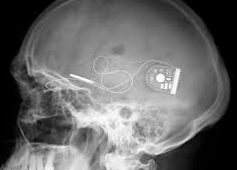 The different methods being tested involve genetic engineering, structural brain surgery, laser therapy, psychosurgery, electronic brain implants, and invasive and non-invasive brain stimulation. As was found with prior attempts to change unwanted behavior through direct brain intervention, researchers caveat the heck out of their work, cautioning that any of the techniques under consideration might have unintended effects on the brain, and the person treated.
The different methods being tested involve genetic engineering, structural brain surgery, laser therapy, psychosurgery, electronic brain implants, and invasive and non-invasive brain stimulation. As was found with prior attempts to change unwanted behavior through direct brain intervention, researchers caveat the heck out of their work, cautioning that any of the techniques under consideration might have unintended effects on the brain, and the person treated.
Hit the pause button, please. Let’s take a minute to digest this.
Science is now talking seriously about going in and changing someone’s brain, hoping to minimize or remove addiction behavior, without knowing what, where, when, how or why the addiction exists.
They only know that in redesigning the brain or merely altering how it works to remove unwanted behavior, they likely would change aspects of the person’s personality and character – the things that define “who” the person is – without knowing what they would create as a result. Wow, now there’s an idea!
But once again, I had to ask, what if I’m wrong?
I had to challenge myself to consider that maybe this new direction could be a good thing. Certainly for some conditions, where the source of the disorder and its symptoms are understood, certain invasive and non-invasive brain procedures are showing real promise.
In the case of treating some memory disorders, for example, researchers are seeing positive response to transcranial magnetic stimulation (TMS) to the hippocampus, the region responsible for long-term memory and its emotional context. In the procedure, an electrical signal, or magnetic pulse, is specifically targeted to synchronize the signals between other brain regions and the hippocampus, boosting memory and understanding. Parkinson’s patients are responding to deep brain stimulation (DBS) of the globus pallidus (GPi), the brain area responsible for movement. Here, continuous magnetic (electrical) pulses are targeted to block unwanted signals that cause tremors.
I can imagine some of the families I’ve met with over the years seeing some form of direct brain intervention as their only choice for saving a loved one with addiction. Heck, I can think back to a time when we were so afraid for our daughter’s life that we might have considered one of the non-invasive options.
But back to that pesky thing about addiction: No one really knows what addiction is. So in manipulating the brain specifically to change outward symptoms, what else might be affected, and what might happen to the addiction? Could it progress and manifest new harmful symptoms?
As a report in Molecular Psychiatry explains,  though researchers are hopeful that DBS might help people with treatment refractory addiction, (repeated failure to respond to traditional addiction treatment) it’s not yet clear which of the 6 brain areas under consideration should be targeted[i].
though researchers are hopeful that DBS might help people with treatment refractory addiction, (repeated failure to respond to traditional addiction treatment) it’s not yet clear which of the 6 brain areas under consideration should be targeted[i].
So I’m thinking, for the past 75 years there has been one view of addiction that is questionable at best, and one treatment method that has failed to manage addiction symptoms or slow its growth. Of course it’s time to try something else, but should the second thing we try go straight to brain surgery? Remember how well that frontal lobotomy thing turned out?
Believe me, I absolutely understand the fear and panic of families watching as their loved ones self-destruct from addiction. I’ve been there! And I do feel their sense of urgency to try something else, hopefully something better, to improve their loved one’s condition. And I also appreciate the tremendous pressure the industry is feeling to do something tangible to bring the addiction crisis under control.
How tempting to imagine, like our accountant with his unmanageable Lamborghini Avendador, that we could just drive our addicted loved one to a local brain mechanic and have them fix whatever’s wrong, freeing them to enjoy life again. Or in a more 21st century vein, that we might be able to make everything better for everyone by jumping on the high-tech brain modification bandwagon. After all, we’ve been told for dozens of years that people’s brains are responsible for their addiction. So now that we have the technology, what could be simpler – change the brain, change the behavior!
How enticing it might be to folks at the end of their ropes, to visualize Jean-Luc Picard (Star Trek Next Generation) simply giving the command, “Make it so!”
But first…
Please come back in a few days for Part 3 of Stand Up! Make It Personal.
[i] DBA consideration for addiction http://www.nature.com/mp/journal/v17/n6/full/mp2011114a.html
Molecular Psychiatry 17, June 2012

